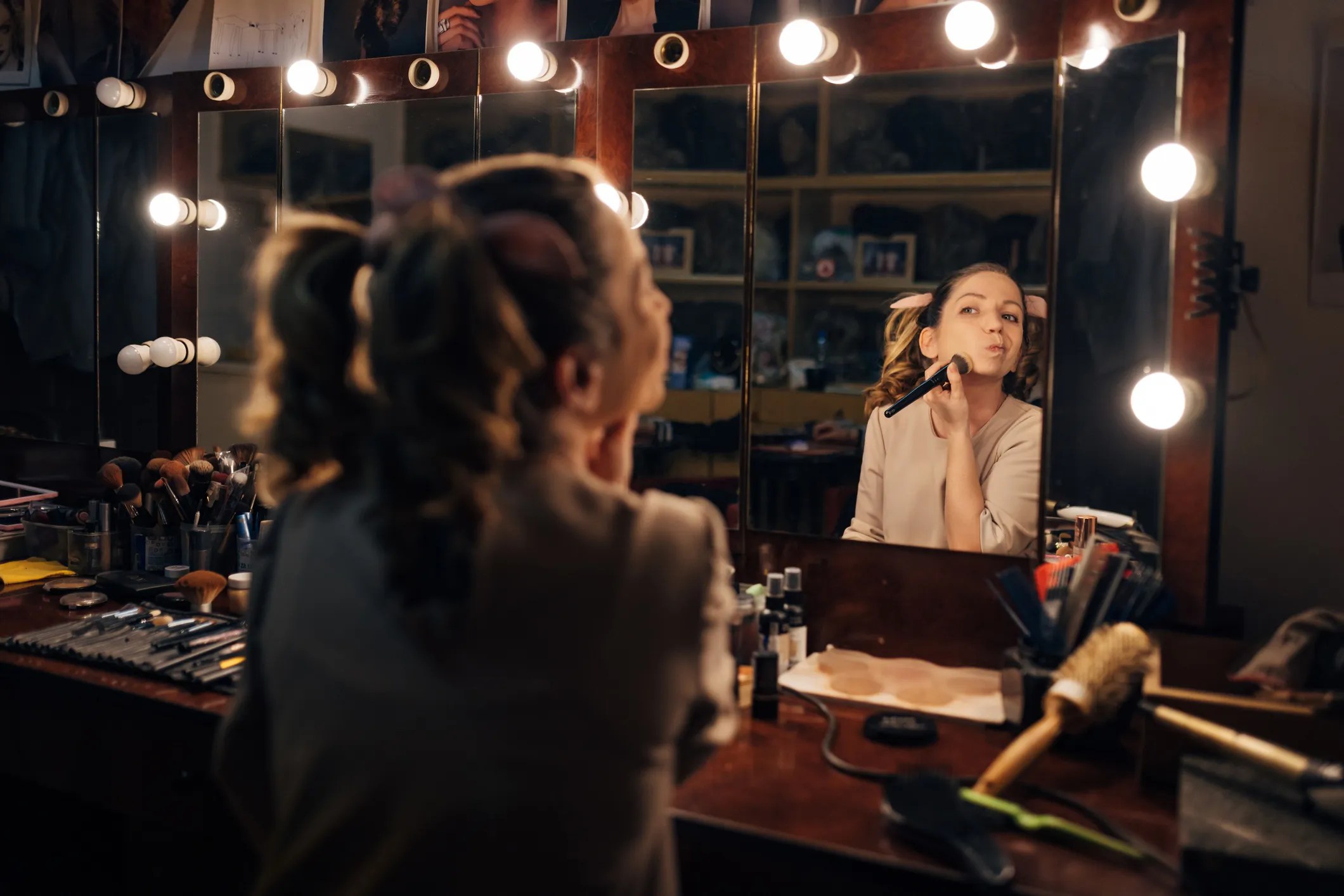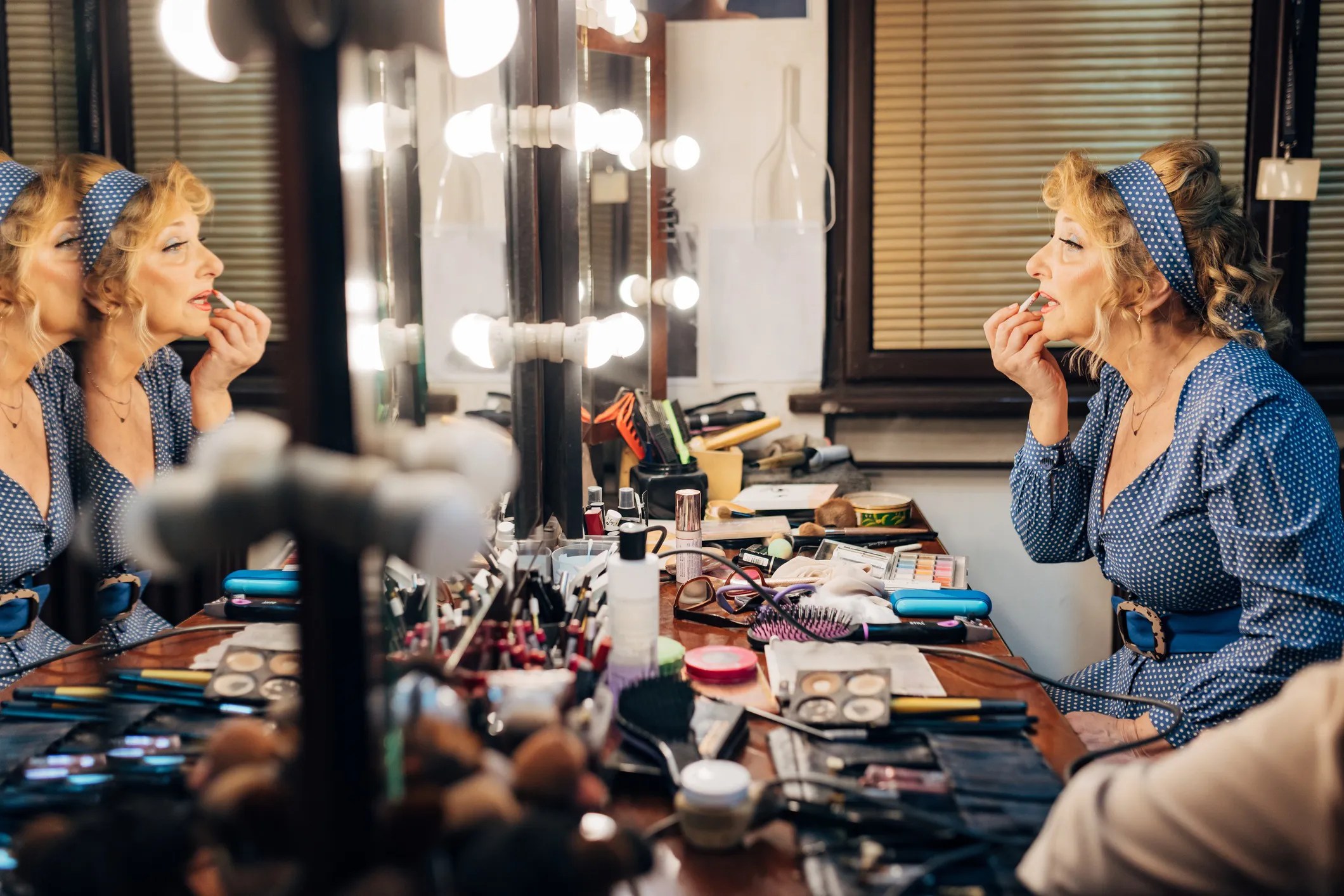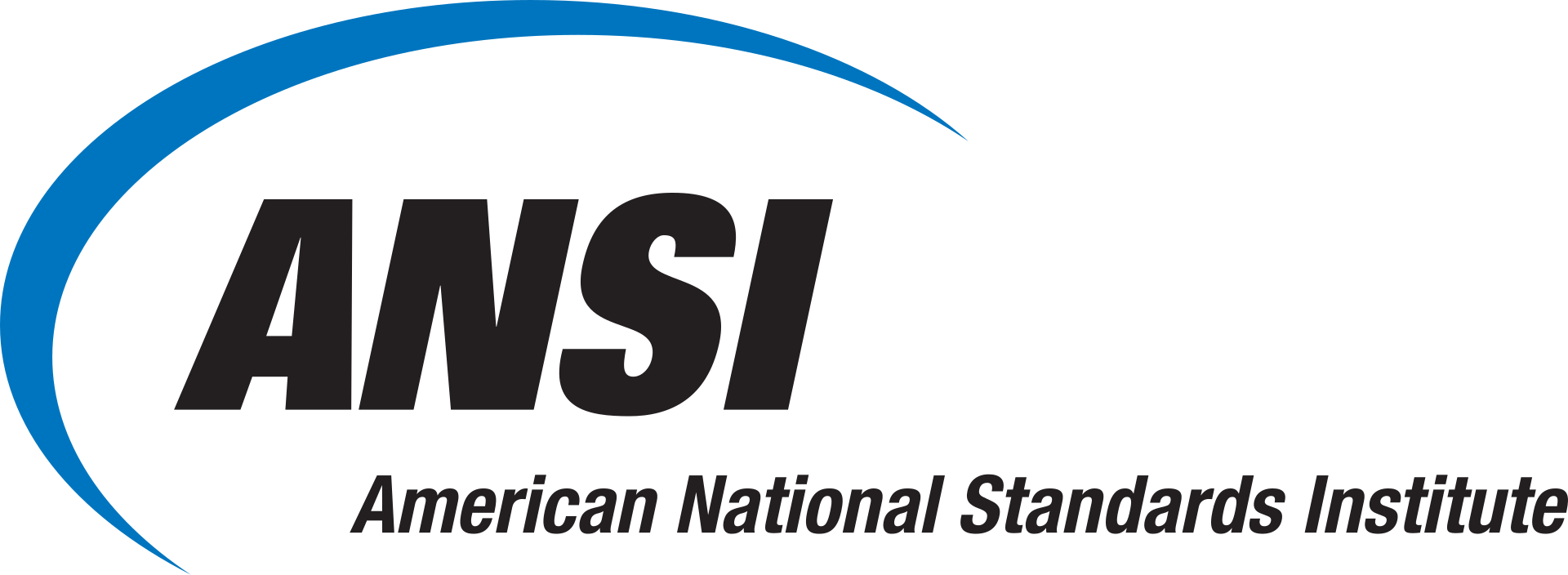ANSI E1.55-2016 (R2021): Theatrical Makeup Mirror Lighting

The modern vanity layout first appeared in the late 1700s. As popular cosmetics were being developed and sold to the masses, makeup found its way to women’s vanity tables, right in front of their mirrors. By the 20th century, the vanity mirror was in high demand and vanities were being mass produced on a larger scale in many different styles and designs to fit individual tastes. Now, vanity mirrors are mass-produced and largely used in theaters and performance venues. ANSI E1.55-2016 (R2021): Standard For Theatrical Makeup Mirror Lighting defines the properties for light to be produced for theatrical makeup mirror lighting.
Importance of Mirror Lighting for Stage Makeup
The illumination for makeup mirrors in theaters and other performance venue dressing rooms is provided by a vertical row of lamps on each side of the mirror, with an additional horizontal row along the top. The development of non-incandescent sources has increased the number of possible errors (e.g., no lamps on one side, lamps too dim, and/or lamps too bright) in a makeup mirror lighting system.
Simply put, it is possible to have a makeup mirror lighting system that does not provide sufficient light to allow a performer or makeup artist to apply makeup quickly and accurately. Therefore, ANSI E1.55 – 2016 (R2021) strives to detail specifications regarding the illumination of makeup mirrors so makeup artist can more easily and accurately provide stage makeup.
What Is ANSI E1.55-2016?
ANSI E1.55 – 2016 (R2021) specifies guidelines for makeup mirrors and makeup stations in theatres and other performance venues. The American National Standard describes the topology of the makeup mirror lighting system, the quantity of light, the distribution of light from those sources, apparent source size, brightness, color rendering, and correlated color temperature.
Further, this standard is intended to describe the illumination levels produced on the performer’s face, the distribution of light sources and the light from those sources, apparent source size, maximum luminance, color rendering, and correlated color temperature of lighting for makeup mirrors. The objective of ANSI E1.55 – 2016 (R2021) is to help performers and makeup artists apply makeup quickly and accurately.
This standard does not address the electrical or mechanical safety of makeup mirror lighting systems. Those matters are addressed in standards published by other organizations.

Mirror Symbolism in Literature: Exploring Vanity, Beauty, and Truth
There are many imaginative emotive uses of mirrors in fiction that incorporate themes of vanity, beauty, reflection, and truth, such as:
- “Snow White, The Magic Mirror” (originally published by the Brothers Grimm fairy tale collection in 1812): The Evil Queen uses the magic mirror to find the fairest maiden in the land and as long as the image is of her face, she is satisfied. When the image changes to that of her beautiful step-daughter Snow White, she begins to plot the girl’s untimely death.
- Richard II (published by William Shakespeare in 1595): A weak king but a consummate drama queen, Richard II sends for a looking glass when he finds himself about to be deposed by his cousin Henry Bolingbroke.
- Through the Looking-Glass (published by Lewis Carroll in 1871): Alice is playing with her kittens in front of a large mirror. This time she does not fall down a hole to Wonderland but instead climbs through a mirror into a world. Inside the looking glass, everything is reversed, including logic, poetry, and even physics. Alice must use her wits to find a way out of this topsy-turvy world. The theme of reflection runs heavily throughout the book.
- Dracula (written by Bram Stoker in 1897): A mirror shows Jonathan Harker that he really is in a fix, and he becomes suspicious of Count Dracula (a vampire). When Dracula throws the mirror out the window, it is a symbol that Dracula’s soul is in confinement and that Dracula is incapable of solving the problem on his own, forcing him to follow the laws and bounds that control a being like him. Laws confines Dracula thereby makes him weak, so all he can do is throw the mirror out the window but it cannot erase what Harker has seen and now realized about who he really is.
What Is the Best Light for Makeup Mirrors?
Natural sunlight (at noon) is the best light for makeup application because it is evenly dispersed and clear, making it easier to see if something is not blending right. If natural light is not available, a soft to bright white LED is the best artificial light. LED lights are best since they give the performer’s face a more natural reflection without washing you out. Many lighted makeup mirrors on the market use LED lights, but there are also models with fluorescent and incandescent bulbs. It is also important to have a good mixture of brightness, color, and temperature.
It is recommended to look for a white light source with 1000 to 1400 lumens (lm), that has a color temperature between 4800 and 500 Kelvin (K), and is as color to 10 on the Color Rendering Index (CRI) as possible. For reference, pure sunlight has a 5000K color temperature, making it clear and good at rendering color and has a CRI of 100.
Moreover, ANSI E1.55 – 2016 (R2021) specifies requirements for level illumination, maximum luminance, CCT, color rendering, topology, inverted U lighting, double vertical row, double horizontal row, illumination distribution, uniformity, and more variables in order to assure that theatrical makeup mirrors provide performers and makeup artists with the best illumination.
How Does ANSI E1.55-2016 (R2021) Improve Makeup Application Accuracy?
ANSI E1.55 – 2016 (R2021) sets guidelines that assure that the lighting for makeup mirrors and makeup stations is properly balanced with vertical lamps on each side and a horizontal row on top. This allows for evenly distributed illumination as well as reduces common lighting errors—like uneven brightness or missing lamps—that can cause shadows or color distortion. As such, adhering to the guidelines in ANSI E1.55 – 2016 (R2021) for theatrical makeup mirror lighting allows makeup artists to see true colors and details clearly for precise and efficient application.
ANSI E1.55-2016 (R2021): Standard For Theatrical Makeup Mirror Lighting is available on the ANSI Webstore.
Please direct any technical questions relating to this American National Standard to the developer. You can find the contact information for all standard developing organizations (SDOs) here: Who to Contact for Standards Related Questions.






